#robots from 2022
Explore tagged Tumblr posts
Text
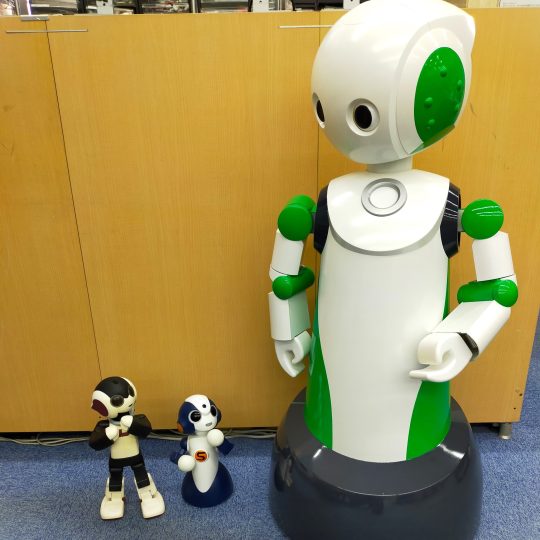
Robovie-R4 by Vstone (2022)
#robotics#humanoid robots#wheeled robots#japan#japanese robots#vstone#2020s robots#robots from 2022#robots#2020s#2022
0 notes
Text



something happened to him due to unforeseen circumstances
#whatever happened to robot jones#2022#yup these are olddd#whtrj#there were some actual like not doodles from that time but i have to dig through stuff to find them 😔
17 notes
·
View notes
Text

August Kitko and the Mechas from Space is wild. Music makes mechas suck you into their goo bellies and use you as conduits to better comprehend the memories of people they've killed to then fight other mechas? Yeah sure, sounds like a totally great idea. I'm so down. Let's jam you great big hunk of metal. Honestly, Alex White always manages to make awesome space operas, so it's no surprise really that this one is good. August is a sweetheart, Ardent is an absolute boss, and a bit of a pain, and everyone else needs to leave the two of them alone so they can… u know. Ardent Violet is my new favourite nonbinary pop idol turned full-metal conduit, and they're going to be really hard to beat. Gus is an absolute mood and I appreciate him So Much. And my god this book would have such a great soundtrack if it were an album. I need the next book in the Starmetal Symphony series ASAP. Alex, if I write you a song, (it will not be jazz) will you please give me more ArdGus?? Please?
#fullibooked#august kitko and the mechas from space#alex white#space opera#science fiction#sci fi books#books#queer books#nonbinary character#favourite authors#bookblr#booklr#mechas#space robots#books i read in 2022#back catalogue
3 notes
·
View notes
Text
someone left a comment on an old* tf fic of mine asking if it’s abandoned and i’m too embarrassed to reply because how do i say “actually i never plotted this fic out so i haven’t the foggiest where it goes even though i desperately want to update out” without sounding insane
#*by old i mean from like 2021/2022#ie my tf resurgence era. whoo robots#anyway i need to sit down and plot out my unfinished published wips so i can update them#c.txt
3 notes
·
View notes
Text

I’m gonna make a reference sheet for this little guy soon I promise…
#stray game#stray 2022#stray fanart#stray oc#digital art#art post#video games#yes his name is from a constellation#my husband#tall robot… mmmm…#a lot of stuff is wrong on him but it’s ok#fuck it we ball
5 notes
·
View notes
Text
so uh. crescendo
#more like cresENDo my life#how the fuck#i thought cones last year was bad now its rings#and foam rings as well#at least its only one game piece#also#CHAIN HANG??? CHAINS????#you're telling me to hang not one but two hundred pound robots from a CHAIN???#i saw 2022 ok those robots are fucking dying#and we're making the human players do ultimate frisbee ok#frc is. fun 🤩
4 notes
·
View notes
Text

miu redesign but i pulled out one of those artsy airbrushes and re-coloured her like she's a garage kit
#my art#my ocs#artists on tumblr#original character#original characters#if you told me. circa like.. 2022. that this gay little robot would go from being fated to die a painful death to becoming my mascot#he'd believe you probably...#neo miu nova
1 note
·
View note
Video
youtube
NASA UAP (UFO) board video and summary
living in the post disclosure age
lmao reports from the government version of alien con 2024
“yep they’re still silvery and quick as fuck yall, we still don’t know what tf they are, back to you in the studio, April”
#youtube#ufo#disclosure#2012#2024#good ish#just don't look them in the eyes#if they visit you that is#nah it's a straight zoo up there fam there's a whole biology to explore and learn of UAPs#interesting how the sci fi film#nope (2022)#gets at this too#like these flying beasts may not even be machines maybe they're space faring organisms...sky sharks#of course many others are actual ships that have alien crew inside too#others still might be robotic drones#lots of types of UFOs#further still could be a class of UFO that's just time traveling humans from the future
1 note
·
View note
Text
"욕망의 저렴 합성" "Cheap synthesis made from desire."
🔽원본은 다들 아시겠지만 2022 코믹콘 (스코틀랜드) (As most of you know, the original is from Comic Con Scotland 2022)
youtube

한동안 로봇이 안그려져서 의미불명 낙서만 땃땃땃 I haven't drawn robots for a while, so I've just been making meaningless doodles ✍️
#transformers#maccadams#maccadam#transformers fanart#tf fanart#soundwave#humanformers#transformers human au#transformers humanization#Youtube#TF擬人化
1K notes
·
View notes
Text
I dont rlly draw ultrakill fanart anymore but heres some artworks i did when i was playing the game around 2022!

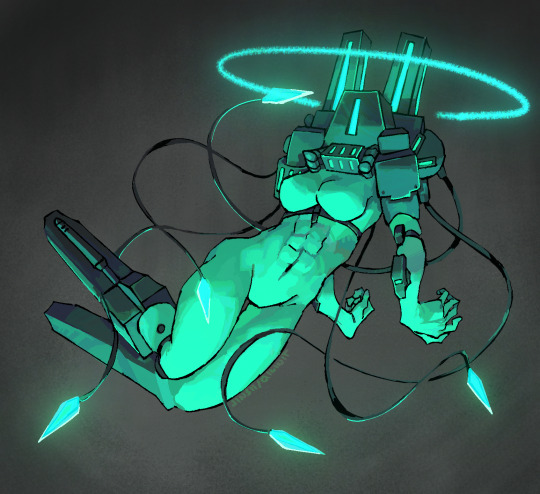
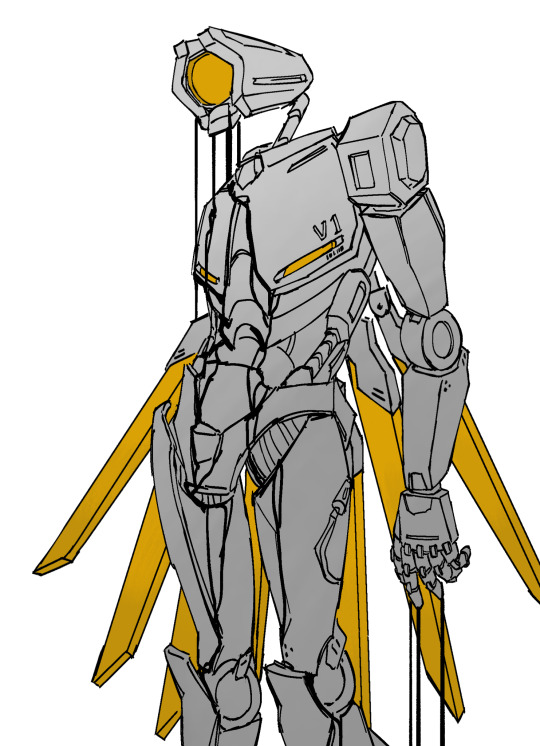
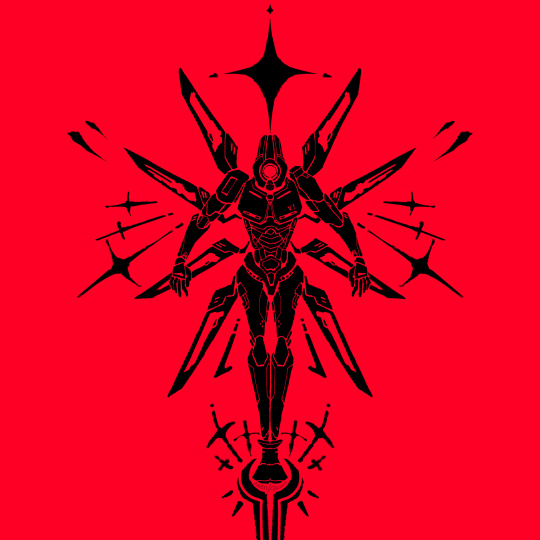

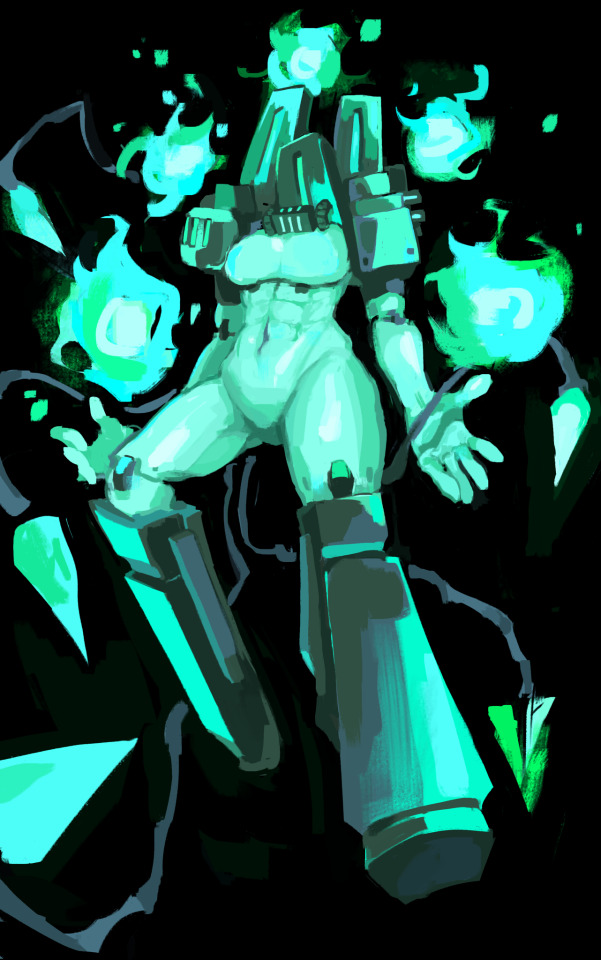
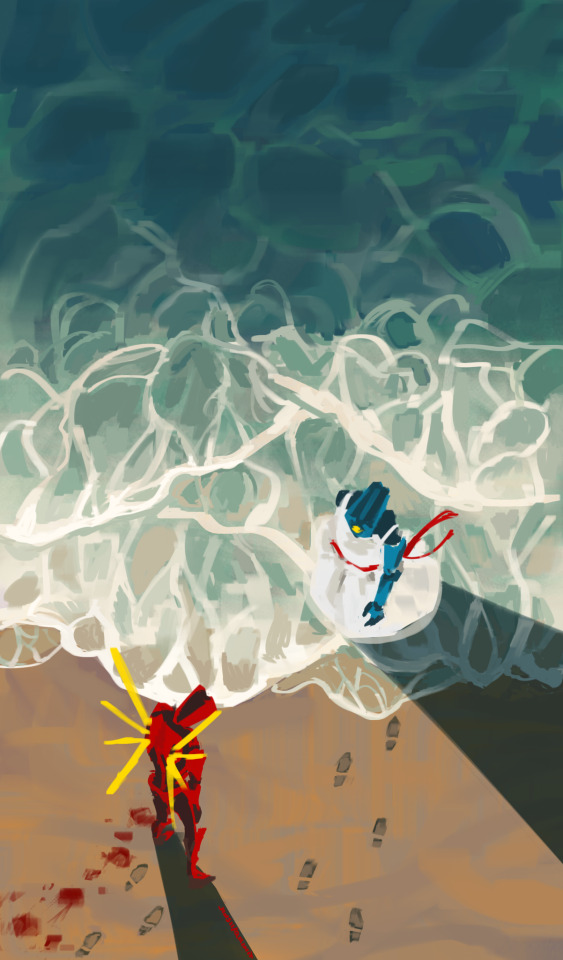
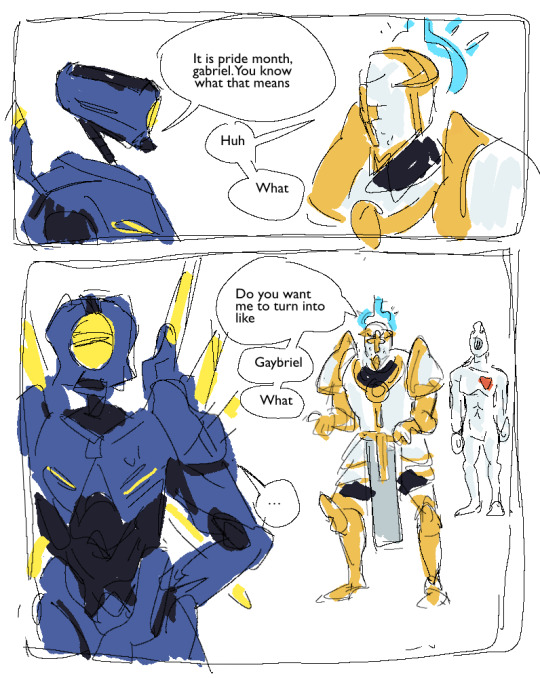
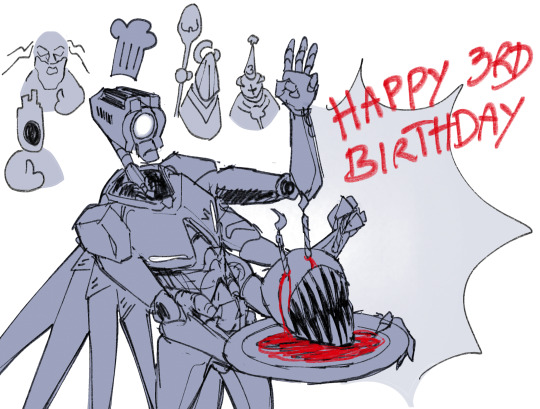
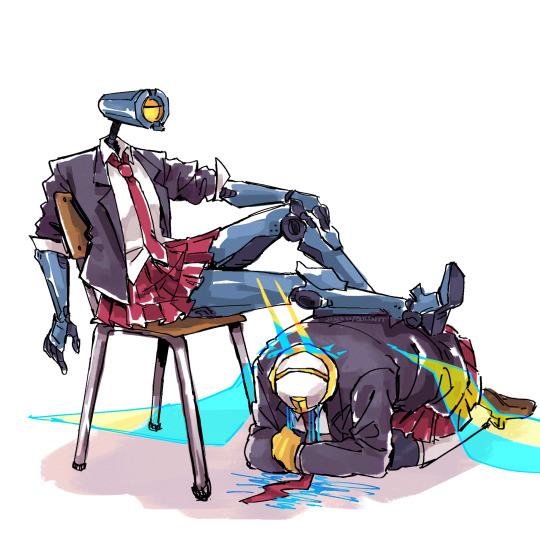
Weird robots and godly entities tbh. Also the sea one is from mothcpu’s dreams end come true.
#qilin art tag i think#ultrakill#ultrakill fanart#v1 ultrakill#gabriel ultrakill#v2 ultrakill#hot robots near ur area
2K notes
·
View notes
Text
The mystery of that random magenta-haired Sonic woman: solved?
For almost three years now, there's been a little mystery in the Sonic franchise: who the hell is this lady?
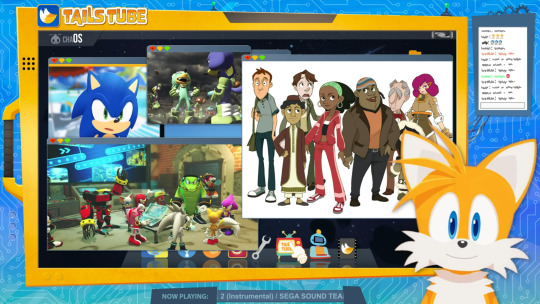

Well, it seems like fans have collectively pieced together the answer. And it's more interesting than I expected.
For those who don't keep up with Sonic lore minutia like I do, this is a screenshot from the very first episode of TailsTube, released on YouTube back in March 2022. When Sonic and Tails were explaining the basics of their Earth and the fact that humans and anthropomorphic animals coexist, Tails showed a slide of some human NPCs from Sonic Unleashed. But the slide also included this never-before-seen character design, drawn in a conspicuously different, more anime-influenced art style from the Pixar-esque Unleashed characters. So... where's she from?
At the time, it was assumed that she was probably from an upcoming project. She looks like she could be an explorer of some sort, so maybe she's just an NPC from Frontiers, I thought. And then she wasn't in Frontiers. Sonic Prime, maybe? Nope, no humans in Prime. Okay, well maybe the IDW comics are going to start incorporating humans, now that the "two worlds" thing has been undone and humans once again canonically exist on the same planet as Sonic and friends. Well, if she's gonna show up in the comics, it's been almost three years and we still haven't seen her. That'd be a hell of a lead time for comics, where production cycles are typically a matter of months, not years. Time continued to pass, and we still hadn't seen her. We just had Ian Flynn teasing us with a #KnowingSmile, assuring us that she existed for some reason, just one that he couldn't talk about yet.
Fast forward to late 2024, and she suddenly makes an appearance in the last place anyone would have expected: the third live action movie, via an electronic billboard in Shibuya.

At this point it almost felt like the lore team was trolling us. Is this just a scrapped character design that's become fodder for inside joke cameos or something? Surely all of this teasing couldn't have been for a throwaway character design on a billboard in the background of a movie.
But actually, this billboard gives us an important piece of information: her name! She's labeled here as "Professor Tori." This is important because it connects her to a previous release. In Shadow Generations, Gerald's journal is prefaced with a note from the person who recovered it, addressed to the GUN Commander. In the English version, it's simply signed "T," but in the Japanese version... it's signed "Tori"!
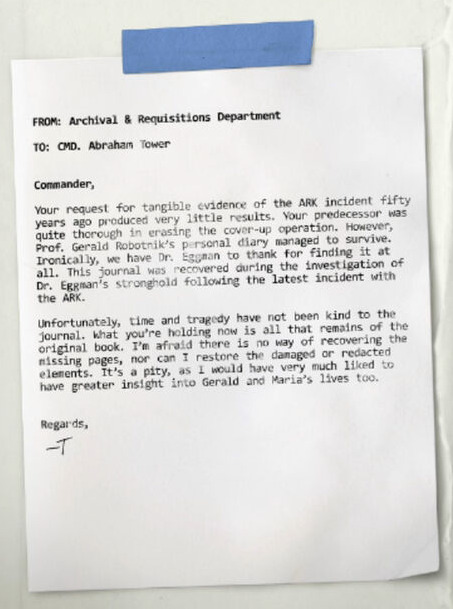
This gives us some actual info about Professor Tori. For one, she seems to work for GUN in their Archival and Requisitions Department. She's apparently also interested in learning about Gerald and Maria's lives, like their old friend Abe is.
Jump forward again to the New Year's episode of TailsTube, and this appears in the background.

Her full name is officially given as Professor Victoria, and she's a historian. So, that seems to confirm everything we've pieced together so far.
As far as things we can reasonably assume to be correct go, this is everything we know for certain about Victoria. She's a historian working for GUN. Cool! But that's not what really fascinates me about her. For that, we have to do a little more speculation based on conjecture.
See, Shadow Generations also establishes information about the Robotnik family tree. Gerald had two sons. One of them took after Gerald's love of technology and became an expert in the field of robotics, and would go on to be Eggman's father. The other son took after Gerald's love of archaeology. This man would go on to be Maria's father. But, as Maria mentions in Shadow Generations... she also happens to have a little sister we've never met before.
So now, the question is: is this Maria's sister, Victoria Robotnik?!
We can't be 100% certain right now, but honestly, until proven otherwise I'm assuming that Victoria is Maria's little sister, now all grown up and working for GUN. It all lines up too neatly. The conspicuous reveal that Maria has an unseen and unnamed little sister, in the same game that establishes her dad was a history guy and also that there's this new historian working for GUN who just so happens to be really interested in her life. And also their names both end in "-ria." Come on!! Putting her in the Robotnik family would also explain all these cryptic clues about her identity. If she was just some random GUN agent, why be so coy and make fans piece it together?
I guess the most odd part here would be, y'know, Victoria working for the organization that killed her sister and grandpa. But Sega's been pushing the idea that GUN is trying to do better for 20 years now, ever since they established that the GUN Commander was Maria's childhood friend on the ARK and had him make amends with Shadow. Hearing that Maria's sister had joined GUN to try and gain access to information about her family history and undo the elaborate coverup of the previous administration would make sense to me, personally. And lest we forget, this would also make Victoria Eggman's cousin, giving him a family member in GUN. And that's a pretty cool storytelling tool to have on hand!
So, that's where we're at now. We have no idea where Victoria will pop up next, whether it's a game or a comic or another TailsTube episode or something else entirely. But it seems like she's fairly important, even if this speculation about her being a Robotnik somehow ends up being wrong. (But I'm pretty damn sold on this theory, personally.) Either way, it's exciting to see the human cast get fleshed out in fun ways again. If we're gonna have humans in Sonic stories, I'd rather they have anime-style designs and interesting connections to the narrative, rather than just being generic humans for the sake of having humans. I'm looking forward to seeing whatever the lore team's been cooking up here.
3K notes
·
View notes
Text
Bossware is unfair (in the legal sense, too)

You can get into a lot of trouble by assuming that rich people know what they're doing. For example, might assume that ad-tech works – bypassing peoples' critical faculties, reaching inside their minds and brainwashing them with Big Data insights, because if that's not what's happening, then why would rich people pour billions into those ads?
https://pluralistic.net/2020/12/06/surveillance-tulip-bulbs/#adtech-bubble
You might assume that private equity looters make their investors rich, because otherwise, why would rich people hand over trillions for them to play with?
https://thenextrecession.wordpress.com/2024/11/19/private-equity-vampire-capital/
The truth is, rich people are suckers like the rest of us. If anything, succeeding once or twice makes you an even bigger mark, with a sense of your own infallibility that inflates to fill the bubble your yes-men seal you inside of.
Rich people fall for scams just like you and me. Anyone can be a mark. I was:
https://pluralistic.net/2024/02/05/cyber-dunning-kruger/#swiss-cheese-security
But though rich people can fall for scams the same way you and I do, the way those scams play out is very different when the marks are wealthy. As Keynes had it, "The market can remain irrational longer than you can remain solvent." When the marks are rich (or worse, super-rich), they can be played for much longer before they go bust, creating the appearance of solidity.
Noted Keynesian John Kenneth Galbraith had his own thoughts on this. Galbraith coined the term "bezzle" to describe "the magic interval when a confidence trickster knows he has the money he has appropriated but the victim does not yet understand that he has lost it." In that magic interval, everyone feels better off: the mark thinks he's up, and the con artist knows he's up.
Rich marks have looong bezzles. Empirically incorrect ideas grounded in the most outrageous superstition and junk science can take over whole sections of your life, simply because a rich person – or rich people – are convinced that they're good for you.
Take "scientific management." In the early 20th century, the con artist Frederick Taylor convinced rich industrialists that he could increase their workers' productivity through a kind of caliper-and-stopwatch driven choreographry:
https://pluralistic.net/2022/08/21/great-taylors-ghost/#solidarity-or-bust
Taylor and his army of labcoated sadists perched at the elbows of factory workers (whom Taylor referred to as "stupid," "mentally sluggish," and as "an ox") and scripted their motions to a fare-the-well, transforming their work into a kind of kabuki of obedience. They weren't more efficient, but they looked smart, like obedient robots, and this made their bosses happy. The bosses shelled out fortunes for Taylor's services, even though the workers who followed his prescriptions were less efficient and generated fewer profits. Bosses were so dazzled by the spectacle of a factory floor of crisply moving people interfacing with crisply working machines that they failed to understand that they were losing money on the whole business.
To the extent they noticed that their revenues were declining after implementing Taylorism, they assumed that this was because they needed more scientific management. Taylor had a sweet con: the worse his advice performed, the more reasons their were to pay him for more advice.
Taylorism is a perfect con to run on the wealthy and powerful. It feeds into their prejudice and mistrust of their workers, and into their misplaced confidence in their own ability to understand their workers' jobs better than their workers do. There's always a long dollar to be made playing the "scientific management" con.
Today, there's an app for that. "Bossware" is a class of technology that monitors and disciplines workers, and it was supercharged by the pandemic and the rise of work-from-home. Combine bossware with work-from-home and your boss gets to control your life even when in your own place – "work from home" becomes "live at work":
https://pluralistic.net/2021/02/24/gwb-rumsfeld-monsters/#bossware
Gig workers are at the white-hot center of bossware. Gig work promises "be your own boss," but bossware puts a Taylorist caliper wielder into your phone, monitoring and disciplining you as you drive your wn car around delivering parcels or picking up passengers.
In automation terms, a worker hitched to an app this way is a "reverse centaur." Automation theorists call a human augmented by a machine a "centaur" – a human head supported by a machine's tireless and strong body. A "reverse centaur" is a machine augmented by a human – like the Amazon delivery driver whose app goads them to make inhuman delivery quotas while punishing them for looking in the "wrong" direction or even singing along with the radio:
https://pluralistic.net/2024/08/02/despotism-on-demand/#virtual-whips
Bossware pre-dates the current AI bubble, but AI mania has supercharged it. AI pumpers insist that AI can do things it positively cannot do – rolling out an "autonomous robot" that turns out to be a guy in a robot suit, say – and rich people are groomed to buy the services of "AI-powered" bossware:
https://pluralistic.net/2024/01/29/pay-no-attention/#to-the-little-man-behind-the-curtain
For an AI scammer like Elon Musk or Sam Altman, the fact that an AI can't do your job is irrelevant. From a business perspective, the only thing that matters is whether a salesperson can convince your boss that an AI can do your job – whether or not that's true:
https://pluralistic.net/2024/07/25/accountability-sinks/#work-harder-not-smarter
The fact that AI can't do your job, but that your boss can be convinced to fire you and replace you with the AI that can't do your job, is the central fact of the 21st century labor market. AI has created a world of "algorithmic management" where humans are demoted to reverse centaurs, monitored and bossed about by an app.
The techbro's overwhelming conceit is that nothing is a crime, so long as you do it with an app. Just as fintech is designed to be a bank that's exempt from banking regulations, the gig economy is meant to be a workplace that's exempt from labor law. But this wheeze is transparent, and easily pierced by enforcers, so long as those enforcers want to do their jobs. One such enforcer is Alvaro Bedoya, an FTC commissioner with a keen interest in antitrust's relationship to labor protection.
Bedoya understands that antitrust has a checkered history when it comes to labor. As he's written, the history of antitrust is a series of incidents in which Congress revised the law to make it clear that forming a union was not the same thing as forming a cartel, only to be ignored by boss-friendly judges:
https://pluralistic.net/2023/04/14/aiming-at-dollars/#not-men
Bedoya is no mere historian. He's an FTC Commissioner, one of the most powerful regulators in the world, and he's profoundly interested in using that power to help workers, especially gig workers, whose misery starts with systemic, wide-scale misclassification as contractors:
https://pluralistic.net/2024/02/02/upward-redistribution/
In a new speech to NYU's Wagner School of Public Service, Bedoya argues that the FTC's existing authority allows it to crack down on algorithmic management – that is, algorithmic management is illegal, even if you break the law with an app:
https://www.ftc.gov/system/files/ftc_gov/pdf/bedoya-remarks-unfairness-in-workplace-surveillance-and-automated-management.pdf
Bedoya starts with a delightful analogy to The Hawtch-Hawtch, a mythical town from a Dr Seuss poem. The Hawtch-Hawtch economy is based on beekeeping, and the Hawtchers develop an overwhelming obsession with their bee's laziness, and determine to wring more work (and more honey) out of him. So they appoint a "bee-watcher." But the bee doesn't produce any more honey, which leads the Hawtchers to suspect their bee-watcher might be sleeping on the job, so they hire a bee-watcher-watcher. When that doesn't work, they hire a bee-watcher-watcher-watcher, and so on and on.
For gig workers, it's bee-watchers all the way down. Call center workers are subjected to "AI" video monitoring, and "AI" voice monitoring that purports to measure their empathy. Another AI times their calls. Two more AIs analyze the "sentiment" of the calls and the success of workers in meeting arbitrary metrics. On average, a call-center worker is subjected to five forms of bossware, which stand at their shoulders, marking them down and brooking no debate.
For example, when an experienced call center operator fielded a call from a customer with a flooded house who wanted to know why no one from her boss's repair plan system had come out to address the flooding, the operator was punished by the AI for failing to try to sell the customer a repair plan. There was no way for the operator to protest that the customer had a repair plan already, and had called to complain about it.
Workers report being sickened by this kind of surveillance, literally – stressed to the point of nausea and insomnia. Ironically, one of the most pervasive sources of automation-driven sickness are the "AI wellness" apps that bosses are sold by AI hucksters:
https://pluralistic.net/2024/03/15/wellness-taylorism/#sick-of-spying
The FTC has broad authority to block "unfair trade practices," and Bedoya builds the case that this is an unfair trade practice. Proving an unfair trade practice is a three-part test: a practice is unfair if it causes "substantial injury," can't be "reasonably avoided," and isn't outweighed by a "countervailing benefit." In his speech, Bedoya makes the case that algorithmic management satisfies all three steps and is thus illegal.
On the question of "substantial injury," Bedoya describes the workday of warehouse workers working for ecommerce sites. He describes one worker who is monitored by an AI that requires him to pick and drop an object off a moving belt every 10 seconds, for ten hours per day. The worker's performance is tracked by a leaderboard, and supervisors punish and scold workers who don't make quota, and the algorithm auto-fires if you fail to meet it.
Under those conditions, it was only a matter of time until the worker experienced injuries to two of his discs and was permanently disabled, with the company being found 100% responsible for this injury. OSHA found a "direct connection" between the algorithm and the injury. No wonder warehouses sport vending machines that sell painkillers rather than sodas. It's clear that algorithmic management leads to "substantial injury."
What about "reasonably avoidable?" Can workers avoid the harms of algorithmic management? Bedoya describes the experience of NYC rideshare drivers who attended a round-table with him. The drivers describe logging tens of thousands of successful rides for the apps they work for, on promise of "being their own boss." But then the apps start randomly suspending them, telling them they aren't eligible to book a ride for hours at a time, sending them across town to serve an underserved area and still suspending them. Drivers who stop for coffee or a pee are locked out of the apps for hours as punishment, and so drive 12-hour shifts without a single break, in hopes of pleasing the inscrutable, high-handed app.
All this, as drivers' pay is falling and their credit card debts are mounting. No one will explain to drivers how their pay is determined, though the legal scholar Veena Dubal's work on "algorithmic wage discrimination" reveals that rideshare apps temporarily increase the pay of drivers who refuse rides, only to lower it again once they're back behind the wheel:
https://pluralistic.net/2023/04/12/algorithmic-wage-discrimination/#fishers-of-men
This is like the pit boss who gives a losing gambler some freebies to lure them back to the table, over and over, until they're broke. No wonder they call this a "casino mechanic." There's only two major rideshare apps, and they both use the same high-handed tactics. For Bedoya, this satisfies the second test for an "unfair practice" – it can't be reasonably avoided. If you drive rideshare, you're trapped by the harmful conduct.
The final prong of the "unfair practice" test is whether the conduct has "countervailing value" that makes up for this harm.
To address this, Bedoya goes back to the call center, where operators' performance is assessed by "Speech Emotion Recognition" algorithms, a psuedoscientific hoax that purports to be able to determine your emotions from your voice. These SERs don't work – for example, they might interpret a customer's laughter as anger. But they fail differently for different kinds of workers: workers with accents – from the American south, or the Philippines – attract more disapprobation from the AI. Half of all call center workers are monitored by SERs, and a quarter of workers have SERs scoring them "constantly."
Bossware AIs also produce transcripts of these workers' calls, but workers with accents find them "riddled with errors." These are consequential errors, since their bosses assess their performance based on the transcripts, and yet another AI produces automated work scores based on them.
In other words, algorithmic management is a procession of bee-watchers, bee-watcher-watchers, and bee-watcher-watcher-watchers, stretching to infinity. It's junk science. It's not producing better call center workers. It's producing arbitrary punishments, often against the best workers in the call center.
There is no "countervailing benefit" to offset the unavoidable substantial injury of life under algorithmic management. In other words, algorithmic management fails all three prongs of the "unfair practice" test, and it's illegal.
What should we do about it? Bedoya builds the case for the FTC acting on workers' behalf under its "unfair practice" authority, but he also points out that the lack of worker privacy is at the root of this hellscape of algorithmic management.
He's right. The last major update Congress made to US privacy law was in 1988, when they banned video-store clerks from telling the newspapers which VHS cassettes you rented. The US is long overdue for a new privacy regime, and workers under algorithmic management are part of a broad coalition that's closer than ever to making that happen:
https://pluralistic.net/2023/12/06/privacy-first/#but-not-just-privacy
Workers should have the right to know which of their data is being collected, who it's being shared by, and how it's being used. We all should have that right. That's what the actors' strike was partly motivated by: actors who were being ordered to wear mocap suits to produce data that could be used to produce a digital double of them, "training their replacement," but the replacement was a deepfake.
With a Trump administration on the horizon, the future of the FTC is in doubt. But the coalition for a new privacy law includes many of Trumpland's most powerful blocs – like Jan 6 rioters whose location was swept up by Google and handed over to the FBI. A strong privacy law would protect their Fourth Amendment rights – but also the rights of BLM protesters who experienced this far more often, and with far worse consequences, than the insurrectionists.
The "we do it with an app, so it's not illegal" ruse is wearing thinner by the day. When you have a boss for an app, your real boss gets an accountability sink, a convenient scapegoat that can be blamed for your misery.
The fact that this makes you worse at your job, that it loses your boss money, is no guarantee that you will be spared. Rich people make great marks, and they can remain irrational longer than you can remain solvent. Markets won't solve this one – but worker power can.

Image: Cryteria (modified) https://commons.wikimedia.org/wiki/File:HAL9000.svg
CC BY 3.0 https://creativecommons.org/licenses/by/3.0/deed.en
#pluralistic#alvaro bedoya#ftc#workers#algorithmic management#veena dubal#bossware#taylorism#neotaylorism#snake oil#dr seuss#ai#sentiment analysis#digital phrenology#speech emotion recognition#shitty technology adoption curve
2K notes
·
View notes
Text
"The idea of reforming Omelas is a pleasant idea, to be sure, but it is one that Le Guin herself specifically tells us is not an option. No reform of Omelas is possible — at least, not without destroying Omelas itself:
If the child were brought up into the sunlight out of that vile place, if it were cleaned and fed and comforted, that would be a good thing, indeed; but if it were done, in that day and hour all the prosperity and beauty and delight of Omelas would wither and be destroyed. Those are the terms.
'Those are the terms', indeed. Le Guin’s original story is careful to cast the underlying evil of Omelas as un-addressable — not, as some have suggested, to 'cheat' or create a false dilemma, but as an intentionally insurmountable challenge to the reader. The premise of Omelas feels unfair because it is meant to be unfair. Instead of racing to find a clever solution ('Free the child! Replace it with a robot! Have everyone suffer a little bit instead of one person all at once!'), the reader is forced to consider how they might cope with moral injustice that is so foundational to their very way of life that it cannot be undone. Confronted with the choice to give up your entire way of life or allow someone else to suffer, what do you do? Do you stay and enjoy the fruits of their pain? Or do you reject this devil’s compromise at your own expense, even knowing that it may not even help? And through implication, we are then forced to consider whether we are — at this very moment! — already in exactly this situation. At what cost does our happiness come? And, even more significantly, at whose expense? And what, in fact, can be done? Can anything?
This is the essential and agonizing question that Le Guin poses, and we avoid it at our peril. It’s easy, but thoroughly besides the point, to say — as the narrator of 'The Ones Who Don’t Walk Away' does — that you would simply keep the nice things about Omelas, and work to address the bad. You might as well say that you would solve the trolley problem by putting rockets on the trolley and having it jump over the people tied to the tracks. Le Guin’s challenge is one that can only be resolved by introspection, because the challenge is one levied against the discomforting awareness of our own complicity; to 'reject the premise' is to reject this (all too real) discomfort in favor of empty wish fulfillment. A happy fairytale about the nobility of our imagined efforts against a hypothetical evil profits no one but ourselves (and I would argue that in the long run it robs us as well).
But in addition to being morally evasive, treating Omelas as a puzzle to be solved (or as a piece of straightforward didactic moralism) also flattens the depth of the original story. We are not really meant to understand Le Guin’s 'walking away' as a literal abandonment of a problem, nor as a self-satisfied 'Sounds bad, but I’m outta here', the way Vivier’s response piece or others of its ilk do; rather, it is framed as a rejection of complacency. This is why those who leave are shown not as triumphant heroes, but as harried and desperate fools; hopeless, troubled souls setting forth on a journey that may well be doomed from the start — because isn’t that the fate of most people who set out to fight the injustices they see, and that they cannot help but see once they have been made aware of it? The story is a metaphor, not a math problem, and 'walking away' might just as easily encompass any form of sincere and fully committed struggle against injustice: a lonely, often thankless journey, yet one which is no less essential for its difficulty."
- Kurt Schiller, from "Omelas, Je T'aime." Blood Knife, 8 July 2022.
#kurt schiller#ursula k. le guin#quote#quotations#the ones who walk away from omelas#trolley problem#activism#introspection#discomfort#reform#revolution#suffering#ethics#morality
11K notes
·
View notes
Text


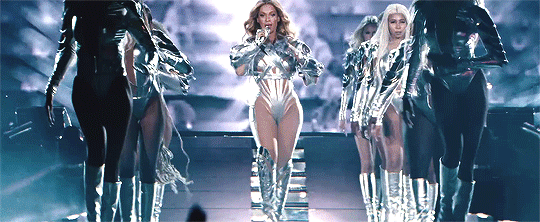

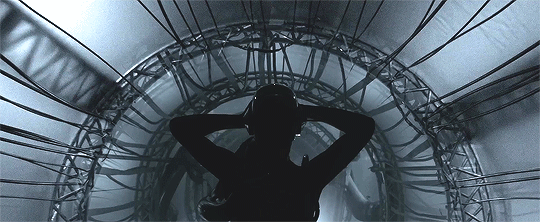
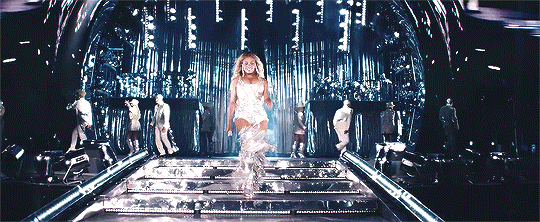
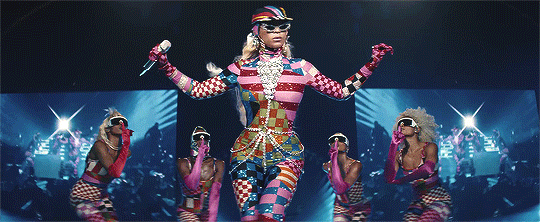

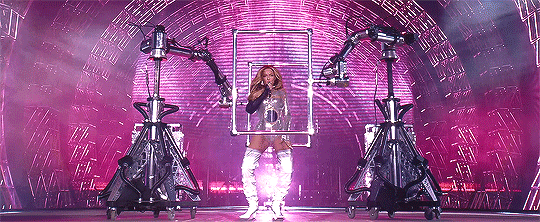
ONE YEAR AGO TODAY, THE RENAISSANCE WORLD TOUR WAS BORN
The Renaissance World Tour was the ninth concert tour by American singer and songwriter Beyoncé. Her highest-grossing tour to date, it was staged in support of her seventh studio album, Renaissance (2022). The tour comprised 56 shows, beginning on May 10, 2023, in Stockholm, Sweden, and concluding on October 1, 2023, in Kansas City, Missouri. It was Beyoncé's first tour since the On the Run II Tour in 2018, and was her fourth all-stadium tour.
The concerts lasted between two and a half and three hours and were split into six or seven acts, with Beyoncé performing the tracks from Renaissance in order, interspersed with songs from across her discography. The stage consisted of a giant screen with a large "portal" in its center, and featured sculptures, robotic arms and ultraviolet technology.
According to official figures provided by Billboard Boxscore, the tour broke ticket sales records worldwide, becoming the seventh-highest-grossing concert tour of all time, the highest-grossing tour ever by a female artist, and the highest-grossing tour by a black artist. It also achieved the two highest monthly tour grosses in history and ranked at number one on the Top Tours Year End 2023 list. The shows received critical acclaim, with particular praise for the production value and Beyoncé's vocal performances. The tour boosted both local and national economies and was a sociocultural phenomenon. Renaissance: A Film by Beyoncé, which chronicles the creation and execution of the tour, was released in cinemas on December 1, 2023.
#beyonce#beyoncé#beyonce gifs#dailymusicqueens#dailywoc#dailymusicians#dailywomen#wonderfulwoc#femaledaily#celebedit#userstream#userbbelcher#gif#by milla#ladiesblr
1K notes
·
View notes
Text
the decline of human creativity in the form of the uprise in AI generated writing is baffling to me. In my opinion, writing is one of the easiest art forms. You just have to learn a couple of very basic things (that are mostly taught in school, i.e; sentence structure and grammar amongst other things like comprehension and reading) and then expand upon that already-foundational knowledge. You can look up words for free— there’s resources upon resources for those who may not be able to afford books, whether physical or non physical. AI has never made art more accessible, it has only ever made production of art (whether it be sonically, visual, written—) cheap and nasty, and it’s taken away the most important thing about art (arguably)— the self expression and the humanity of art. Ai will never replace real artists, musicians, writers because the main point of music and drawing and poetry is to evoke human emotion. How is a robot meant to simulate that? It can’t. Robots don’t experience human emotions. They experience nothing. They’re only destroying our planet— the average 100-word chat-gpt response consumes 519 millilitres of water— that’s 2.1625 United States customary cups. Which, no, on the scale of one person, doesn’t seem like a lot. But according to OpenAI's chief operating officer , chatgpt has 400 million weekly users and plans on hitting 1 billion users by the end of this year (2025). If everyone of those 400 million people received a 100 word response from chat gpt, that would mean 800 MILLION (if not more) cups of water have gone to waste to cool down the delicate circulatory system that powers these ai machines. With the current climate crisis? That’s only going to impact our already fragile and heating-up earth.
but no one wants to talk about those stats. But it is the reality of the situation— A 1 MW data centre can and most likely uses up to 25.5 MILLION litres of water for annual cooling maintenance. Google alone with its data centre used over 21 BILLION litres of fresh water in 2022. God only knows how that number has likely risen. There are projections of predictions saying that 6.6 BILLION cubic meters could be being used up by AI centres by 2027.
not only is AI making you stupid, but it’s killing you and your planet. Be AI conscious and avoid it as much as humanly possible.
#thoughts#diary#rambles#ramblings#diary blog#digital diary#anti ai#i hate ai#writers of tumblr#writeblr#my writing#writblr#art moots#oc artist#oc artwork#original art#artists on tumblr#musings#leftist#writer stuff#female writers#writing#writers on tumblr#writers and poets#creative writing#writerscommunity#looking for moots#looking for friends#anti intellectualism
262 notes
·
View notes
Text
#racing #karaoke #we know they get drunk so i suggest drunk shakespeare equivalent #window shopping. for new windows. #people watching where you try to guess people's alt modes #paintball #go-karts for those with immobile alt modes #code breaking bars #trivia night (via sroloc--elbisivni)
thinking up date activities is hard enough but thinking up date activities for robots who don't eat food is MUCH HARDER
what the fuck do robots even do for fun
#posts that make you realize you are a food-processing machine#Transformers#from 2022#Schniggles queue#robots
47 notes
·
View notes